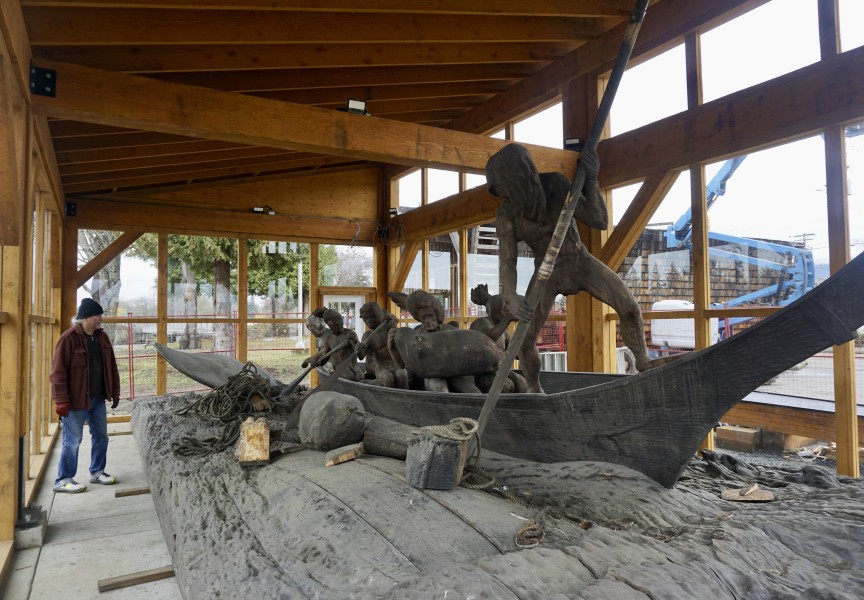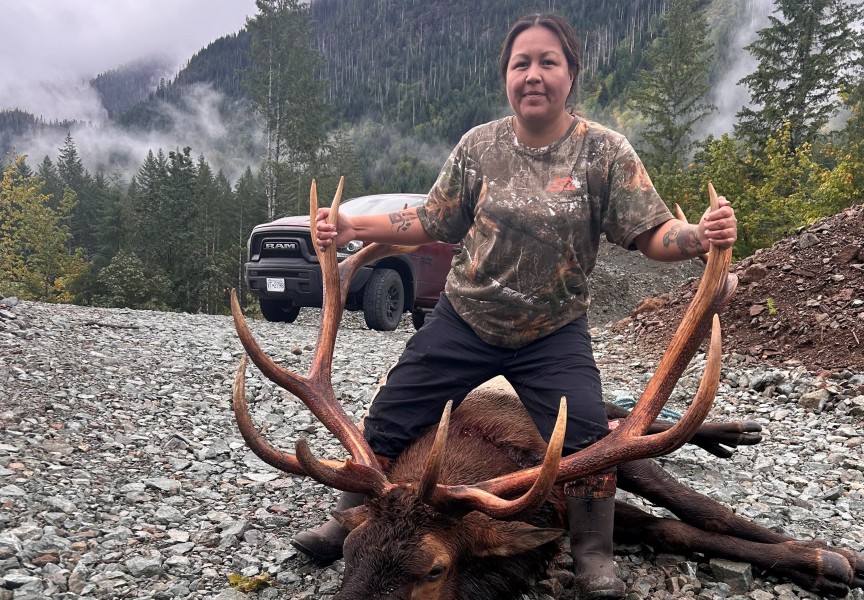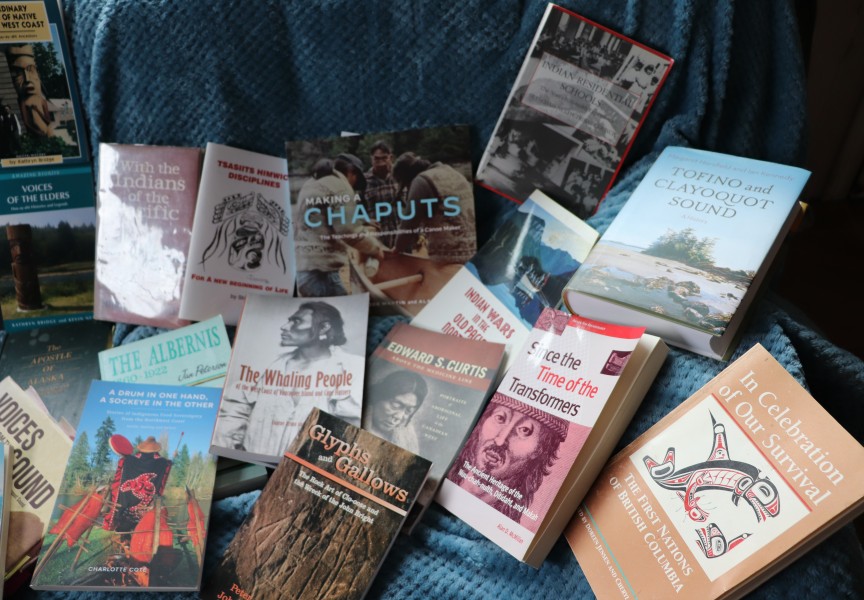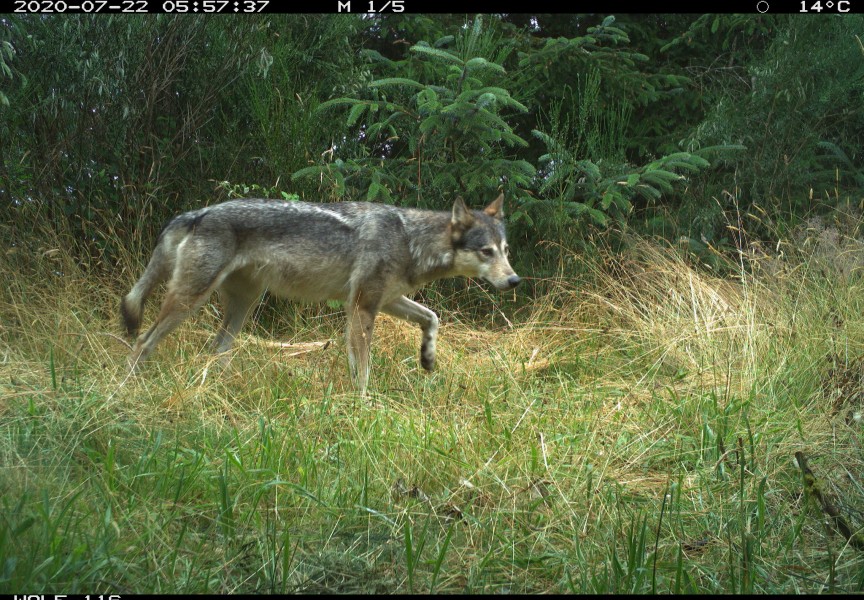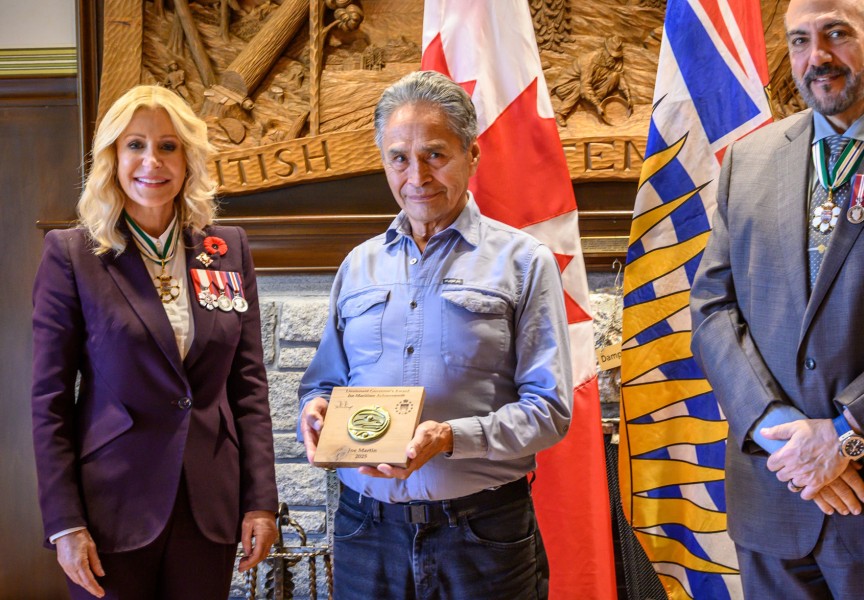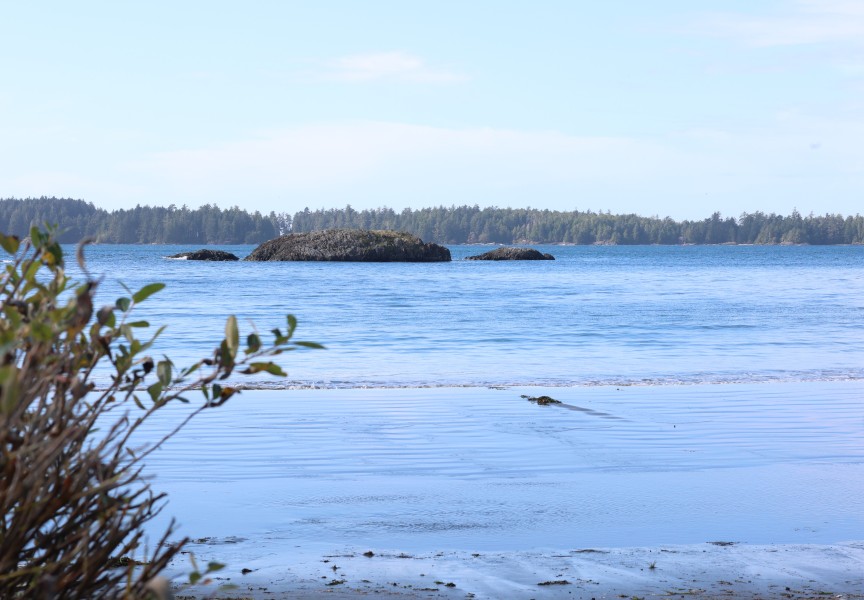When she is not teaching at the college, she’s primarily a jewelry creator. But when Vina Brown was given a golden opportunity to make a collection for a prestigious fashion show, she became a fashion designer.
Brown, 38, lives and works in Bellingham, Washington is Heiltsuk on her father’s side and Nuu-chah-nulth on her mother’s side. She was raised on the teachings of both cultures and proudly integrated their designs into her clothing and jewelry collection, which was recently shown at the second annual SWAIA (Southwestern Association for Indian Arts) Native Fashion Week.
The SWAIA Native Fashion Week (SNFW) brings together leading Native designers, artists, and industry professionals, according to its website. The event took place May 7–11 in Santa Fe, New Mexico, featuring runway shows, panel discussions, industry networking events, pop-up shops and activation spaces.
“This event is a platform for Native designers to shape the future of the industry while honoring their culture and community,” said organizers on the SNFW website.
The event brought together more than 50 Indigenous designers and was covered in the famous American-based fashion magazine Vogue, which was founded in 1892.
Brown told Ha-Shilth-Sa that the invitation came at an opportune point in her life. Still grieving over the sudden loss of two precious family members in an accident, Brown was searching for a wholesome way to let herself out of a cloud of sadness.
Jolene Mitton, a friend of Brown’s, works as a producer for fashion shows like the Vancouver Indigenous Fashion Week, which, according to Brown, was sold out for all of its nights. Mitton was hired as the producer for the SNFW event in New Mexico this year and invited Brown to participate.
“I was deep in grief, I was feeling overwhelmed, and I knew I needed to find joy,” she told Ha-Shilth-Sa.
To make things more exciting, Brown had five short weeks to create 14 runway looks.
“I was still working up to an hour before show,” she laughed.
Brown made her collection through upcycling thrifted items with pieces from her Copper Canoe Woman jewelry collection and other newly created pieces. Other works were created from sketches which were sent to her friend Mary Meka, whose career is in dress making and design. Meka helped create Brown’s salmon dress, mussel dress and the salmon ghost dress.
“We found a $4,000 designer dress for about $20 at Salvation Army and sewed on thousands of acrylic pieces,” said Brown.
She noted that the round Indigenized shapes added to the dress represented divine feminine energy.
“Even when we lose matriarchs, we replace them,” she explained in a nod to her loved ones lost in the accident.
Lessons from weaving swamp grass
Brown draws inspiration from her teachings, “pulling from things I have rights to through lineage on both parents’ sides,” she explained.
The memories made her think of her granny Elsie Robinson from Ahousaht.
“I remember her weaving swamp grass, prepping materials and I never realized how much she was teaching me,” Brown said.
Brown teaches at the Lummi Tribe’s Northwest Indian College at Bellingham, Washington. She notes that since colonization the work of female Indigenous artists has been oppressed, not valued as highly as that of their male counterparts. She said male artists were uplifted, paid more for their work while women were relegated to crafts.
Elsie Robinson spent her final years living in Nanaimo, B.C., where she made and sold cedar and swamp grass baskets. Brown recalled a time when her grandmother set a table set up in Woodgrove Mall to sell baskets. A woman came along, admired the work and selected several pieces to buy. But when she realized she was mistaken about the price, she put the pieces back, saying they were not worth it.
“Granny told me people don’t know how much work goes into these (woven baskets),” said Brown.
A couple of decades later, Brown is showing her art to an international audience and was even covered by Vogue, as the magazine quotes Brown in a story.
“I feel like I redeem my granny a bit,” said Brown about being at the event in New Mexico. “SWAIA gives us platforms where people can buy our art and they are willing to pay thousands of dollars.”
An artist and entrepreneur at heart, Brown has created beaded jewelry since childhood.
“I always beaded and sold at flea markets at the United Church in Bella Bella and I have always been interested in fashion,” said Brown.
She wanted to go to fashion design school but went another route.
Taking beading and Indigenous arts classes reinvigorated her in adulthood. At one point, her family began preparing for a potlatch, so she got to work beading 200 pairs of earrings to give away.
“I started Instagram page to show my earrings,” said Brown, who was working on her master’s degree in Native Law at the time. “I would bead during lectures, it helped me retain information.”
The interest generated from her social media page inspired Brown to launch her business, Copper Canoe Woman, creating unique, Indigenous-themed jewelry. After her introduction to laser cut jewelry, Brown’s business blossomed, as did demand for the pieces.
“I was a one-woman assembly line and had to hire people to help,” she shared.
Teaming up with other artists and friends, Copper Canoe Woman makes and sells jewelry that represents a sizable portion of Indigenous communities across the continent.
“At Copper Canoe Woman, we do not just create jewelry for the sake of creating it. We create pieces deeply interconnected with our respective cultures. It is important to us that we create pieces from stories and teachings that we have the inherent right to,” states Brown on her Copper Canoe Woman website.
Because of the oppression of Indigenous female artistry, Brown infused her new fashion collection with the most gentle, tender feminine energy, inspired by northwest coast dance regalia.
“What doesn’t change is love of family and working together, supporting family,” said Brown, acknowledging those who supported her in the creation of the collection at the recent show.
“It makes me so happy to bring art to world, it’s just joyful to share that with people that want to see it,” said Brown.
While in Santa Fe, Brown and other artists there sold pieces from their collections. Brown explained that a fashion show is more like a trade show and less like a competition.
“Everything shown was available for purchase, bringing more economic opportunity to designers,” said Brown. “We sold all our purses, some jewelry, and we were being uplifted by media outlets and Vogue!”
From this experience, Brown hopes to get invited to other shows, opening her business up to more exposure.
And the next opportunity is already on the horizon. Brown says she is going to Toronto in September to show her collection at the Runway of Reziliance show.
Brown is proud of the attention Indigenous designers are getting at these fashion shows. In couture, she said the materials may change but designs come from ancestry and inherent rights.
“Our art is not frozen in time, and showing it uplifts our culture,” she said.
It’s been an amazing journey for the designer, whose husband, Michael Schajang Jr., is Hopi and takes care of the laser side of the business.
And Brown relies on others for her success.
“We’re community made. We did the collection in five weeks, and I didn’t do it alone,” said Brown.
Her cousin, Natalee Dennis, came from Tofino all the way to Sante Fe to drum and chant during the fashion show.
“Other people came to support me,” she said. “You are responsible for other people, you’re connected to them and when they need help, you help them.”
Opportunities like Indigenous fashion shows is about changing narratives, says Brown, adding that the portrayal of Indigenous people hasn’t been good.
“Our culture has been appropriated and misinterpreted,” said Brown, before quoting Louie Gong, a Nooksack artist. “’Buy from inspired natives, not native inspired’.”
Vina’s Copper Canoe Woman will have a pop-up shop for six months at Bentall Centre in downtown Vancouver. As a resident of Bellingham Washington, she has an American website for her business at Coppercanoewoman.com.
With the uncertainty of the looming tariffs from the Trump administration, plans are in the works to launch a Canadian website. Brown said her merchandise will ship from Vancouver, B.C. to avoid tariff troubles.










